| Vallentinia | |
|---|---|
| Scientific classification | |
| Kingdom: | Animalia |
| Phylum: | Cnidaria |
| Class: | Hydrozoa |
| Order: | Limnomedusae |
| Family: | Olindiidae |
| Genus: | Vallentinia Browne, 1902 |
| Species | |
Vallentinia is a genus of hydrozoans in the family Olindiidae.
| Vallentinia | |
|---|---|
| Scientific classification | |
| Kingdom: | Animalia |
| Phylum: | Cnidaria |
| Class: | Hydrozoa |
| Order: | Limnomedusae |
| Family: | Olindiidae |
| Genus: | Vallentinia Browne, 1902 |
| Species | |
Vallentinia is a genus of hydrozoans in the family Olindiidae.
The World Register of Marine Species currently lists the following species: [1]
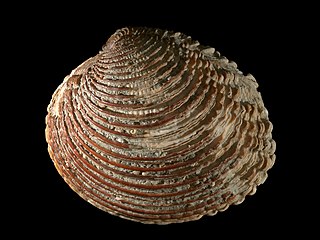
The Veneridae or venerideees, common name: venus clams, are a very large family of minute to large, saltwater clams, marine bivalve molluscs. Over 500 living species of venerid bivalves are known, most of which are edible, and many of which are exploited as food sources.

Gemmula, common name the gem turrids, is a genus of sea snails, marine gastropod mollusks in the family Turridae, the turrids.

Raphitoma is a genus of sea snails, marine gastropod mollusks in the family Raphitomidae.
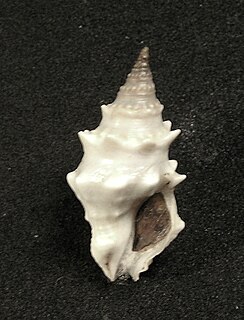
Clavatula is a genus of sea snails, marine gastropod mollusks in the family Clavatulidae.

Antiplanes is a genus of sea snails, marine gastropod mollusks in the family Pseudomelatomidae,.

Boreotrophon is a genus of sea snails, marine gastropod mollusks in the subfamily Pagodulinae of the family Muricidae, the murex snails or rock snails.

Siphonochelus is a genus of sea snails, marine gastropod mollusks in the family Muricidae, the murex snails or rock snails.
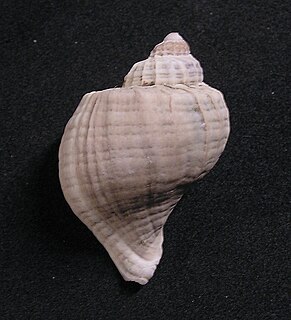
Trophon is a genus of sea snails, marine gastropod mollusks in the family Muricidae, the murex snails or rock snails.

Trophonopsis is a genus of sea snails, marine gastropod mollusks in the family Muricidae, the murex snails or rock snails.

Athleta is a genus of sea snails, marine gastropod mollusks in the family Volutidae.
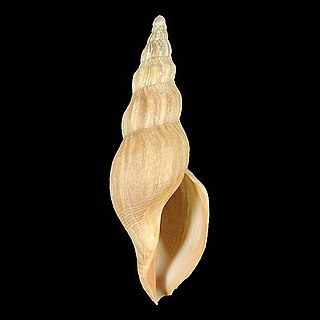
Fusivoluta is a genus of sea snails and marine gastropod mollusks in the family Volutidae.

Cuninidae is a family of hydrozoans in the order Narcomedusae. They have dome-shaped bells and tentacles set above the undulating margin of the bell. Their gastric pouches contain the gonads situated in line with the tentacles, the number of pouches being the same as the number of tentacles. The pouches do not extend below the points of origin of the primary tentacles. Members of some genera have a peripheral canal system and others do not. No radial canals or secondary tentacles are present.

Limnomedusae is an order of hydrozoans.

Olindiidae is a family of hydrozoans in the order Limnomedusae. They have a polyp phase and a medusa phase. The polyps are generally small (1 mm) and solitary, but a few species are colonial. They have a varying number of tentacles and can reproduce by budding. In the largest species, the medusae can grow to 15 cm (6 in). Centripetal canals may be present or absent and the radial canals are unbranched. The gonads are beside the radial canals, except in Limnocnida, where they are on the manubrium. The fertilised eggs develop into planula larvae which become polyps. These multiply asexually or can bud off medusae. In some species, medusae are only produced when the water temperature exceeds a certain level. Most species are marine, but several can also be found in brackish water and a few, notably Craspedacusta and Limnocnida, are found in fresh water.

Aequorea is a genus of pelagic hydrozoans in the family Aequoreidae.
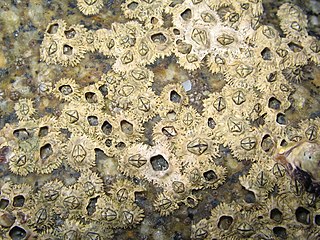
The Hexanauplia constitute a class of crustaceans, comprising two groups: the Copepoda and the Tantulocarida. The former subclass Thecostraca was elevated to class rank and removed from Hexanauplia in 2021.
Amphogona is a genus of deep-sea hydrozoans of the family of Rhopalonematidae.

Phialella is a genus of hydrozoans. It is the only genus within the monotypic family Phialellidae.
Eirene is a genus of hydrozoans in the family Eirenidae.